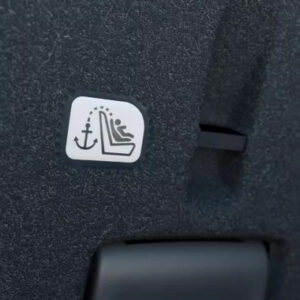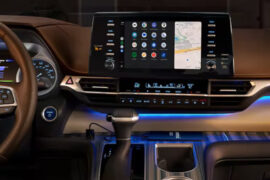Contents
Toyota check charging system
Imagine you’re cruising down the highway in your trusty Toyota Sienna, enjoying the smooth ride, and suddenly, a warning light pops up on your dashboard that says, “Check Charging System.” Panic sets in, right? Don’t worry; you’re not alone. Many Toyota Sienna owners have faced this situation. This article will unravel the mystery behind the “Check Charging System” warning and guide you on what to do when it appears. So, fasten your seatbelt as we take you on a journey to demystify this common issue.
What is the ‘Check Charging System’ Warning?
Let’s start with the basics. The “Check Charging System” warning is a message that appears on your Toyota Sienna’s dashboard. It’s a notification from your vehicle’s onboard computer system that something might be amiss with your charging system. But what exactly is the charging system, and why is it so crucial?
Why Does it Appear?
This warning light doesn’t just randomly appear to ruin your day. It’s trying to tell you something important. Usually, it means a problem with one of the key components of your vehicle’s charging system. But what are these components, and why do they matter?
The Role of the Alternator
To understand why the “Check Charging System” warning is significant, we need to grasp the role of the alternator. Think of the alternator as your car’s power plant. It generates electricity to charge your vehicle’s battery and power the electrical components while you’re driving. Without a properly functioning alternator, your battery will eventually run out of juice.
What is the Alternator?
At its core, the alternator is a compact yet mighty electrical generator. It’s not something you’d typically see when you pop the hood of your car, but its function is crucial to your vehicle’s operation. The alternator’s primary job is to generate electrical power, and it does so by converting mechanical energy from your engine into electrical energy.
Powering Your Electrical Systems
Now, you might wonder why your car needs to generate electricity when it has a battery. While the battery is responsible for starting your vehicle and providing initial power, it has limited energy capacity. Once your car runs, the alternator supplies continuous electricity to power various electrical systems.
Charging the Battery
One of the alternator’s key responsibilities is to charge the car’s battery. As you drive, the alternator replenishes the energy to start the engine and power your headlights, air conditioning, radio, and other electrical components. This constant replenishment ensures your battery remains charged and ready for the next start-up.
Keeping Your Engine Running
The alternator’s importance goes beyond just electrical gadgets. It also plays a crucial role in maintaining your engine’s performance. The electricity generated by the alternator powers the ignition system, providing the spark needed to ignite the fuel-air mixture in your engine’s cylinders. Without this spark, your engine would sputter and stall.
Balancing the Load
One of the alternator’s hidden talents is its ability to adapt to changing electrical demands. When you turn on your car’s headlights, crank up the air conditioning, or blast your favorite tunes, the alternator senses the increased load and works harder to generate more electricity. Conversely, when the electrical load decreases, the alternator eases up, preventing overcharging of the battery.
The Consequence of Alternator Failure
Now that you understand the alternator’s critical role in your vehicle, you can appreciate why the “Check Charging System” warning should not be taken lightly. If the alternator malfunctions or fails, your car will rely solely on the battery’s limited power reserve. This can lead to a drained battery, leaving you stranded with a non-starting vehicle.
Battery Health and Its Impact
Your car’s battery is like its heart. It stores electrical energy to start the engine and power various electrical systems. If your battery is weak or failing, it can trigger the “Check Charging System” warning. We’ll explore this connection further in this section.
Signs and Symptoms
How do you know if your Toyota Sienna’s charging system is in trouble? Look for signs like dimming headlights, a sluggish engine start, or strange electrical issues. These are red flags that something might be amiss.
Immediate Actions to Take
Seeing the warning light can be alarming, but don’t panic. We’ll guide you through the immediate steps when the “Check Charging System” warning appears unwelcome.
Common Misconceptions
There are several myths and misconceptions surrounding this warning light.
- It’s Just a Loose Gas Cap
One prevalent misconception is that the “Check Charging System” warning is related to the fuel system, similar to the “Check Engine” light triggered by a loose gas cap. However, these are entirely separate issues. The “Check Charging System” warning concerns your vehicle’s electrical system, not the fuel system.
- You Can Ignore It
Some drivers believe they can safely ignore the “Check Charging System” warning, thinking it’s not a big deal. This couldn’t be further from the truth. Ignoring this warning can lead to a dead battery and an inoperable vehicle. It’s essential to address the issue promptly to avoid more significant problems.
- It’s Always the Battery’s Fault
While a failing battery can trigger the warning, assuming that the battery is the sole culprit is a mistake. The charging system includes various components, such as the alternator, voltage regulator, and wiring. Any of these parts can malfunction and lead to the warning light.
- Jump-Starting Will Solve the Problem
Jump-starting your vehicle may temporarily resolve the issue if the battery is the main concern. However, it won’t fix a faulty alternator or other charging system components. Using jump-starts as a long-term solution is not advisable, as it can lead to further damage.
- It Doesn’t Affect Vehicle Performance
Some drivers believe the “Check Charging System” warning doesn’t impact performance as long as their car starts and runs. In reality, a malfunctioning charging system can lead to reduced engine power, poor fuel efficiency, and electrical component failures, affecting your vehicle’s overall performance.
- It’s Only a Problem in Older Cars
The “Check Charging System” warning can appear in older and newer vehicles. It’s not exclusive to a particular age group of cars. Modern vehicles have sophisticated electrical systems that are just as susceptible to charging system issues.
- It Will Disappear on Its Own
The warning light may occasionally turn off, leading some to believe the problem has resolved itself. However, this situation is often temporary and should not be relied upon. The underlying issue still needs attention, as it can reoccur and worsen over time.
- Only Professionals Can Address It
While it’s a good idea to consult a professional mechanic when you see the warning, there are some basic troubleshooting steps you can take, such as checking the battery terminals for corrosion or loose connections. However, if the issue persists, professional diagnosis and repair are necessary.
- It’s Just a Sensor Malfunction
Sometimes, drivers assume that the warning light is triggered by a faulty sensor and not an actual problem with the charging system. While sensor issues can happen, it’s crucial to investigate the warning thoroughly to rule out genuine charging system problems.
- It’s Not Urgent
Lastly, one of the most dangerous misconceptions is believing that the “Check Charging System” warning is not urgent. Delaying necessary repairs can result in a complete electrical failure, leaving you stranded. Always treat this warning as a priority.
Repairing the Charging System
Pros:
Cost-Effective: Repairing the charging system is often more budget-friendly than a complete replacement. If the issue is isolated to a specific component, such as a damaged belt or a faulty voltage regulator, the cost of repair can be relatively low.
Faster Turnaround: Repairs are typically quicker to complete than a full replacement. In many cases, you can have your vehicle back on the road within a day or less, depending on the complexity of the repair.
Preservation of OEM Parts: Repairing allows you to keep the original equipment manufacturer (OEM) parts in your vehicle. Some car enthusiasts prefer to maintain the authenticity of their vehicles by sticking with OEM components.
Cons:
Limited Warranty: Repaired components may not have the same warranty as brand-new parts. If the repaired part fails again shortly after the repair, you might have to cover the costs.
Uncertain Longevity: While repairs can address the immediate issue, they may not guarantee the long-term health of your charging system. Other components could fail shortly, leading to additional repair costs.
Replacing the Charging System
Pros:
Comprehensive Solution: A complete replacement ensures that all key components of the charging system, including the alternator and battery, are new and in peak condition. This minimizes the risk of future issues.
Warranty Coverage: Most replacement components have warranties that provide peace of mind. If any part fails within the warranty period, you’re typically covered for repairs or replacements at no additional cost.
Improved Reliability: A new charging system enhances your vehicle’s overall reliability. You can trust that your Toyota Sienna will start smoothly and run without electrical hiccups.
Cons:
Higher Upfront Cost: Replacing the charging system is undoubtedly the more expensive option. It involves purchasing new components and often paying for labor to install them.
Extended Downtime: Replacing the charging system can take longer than a simple repair. You may be without your vehicle for a more extended period, depending on the availability of parts and the complexity of the installation.
Making the Decision
The choice between repairing and replacing your Toyota Sienna’s charging system ultimately depends on several factors, including:
- The specific issue causing the “Check Charging System” warning.
- Your budget and financial considerations.
- Your long-term plans for the vehicle.
- The age and overall condition of your Sienna.
Before making a decision, it’s advisable to consult with a qualified mechanic or service technician. They can diagnose the problem accurately and provide recommendations based on your unique situation.
Preventing Future Issues
Nobody wants to see the “Check Charging System” warning repeatedly. We’ll know some tips on maintaining your charging system to prevent future problems.
Regular Maintenance
Regular maintenance is the key to keeping your charging system in top-notch condition. Here’s what you should include in your maintenance routine:
- Routine Inspections
Schedule regular checkups with your trusted mechanic or perform visual inspections yourself. Look for loose connections, frayed wires, and signs of corrosion around the battery terminals and alternator.
- Battery Checks
Keep an eye on your battery’s health. Most auto parts stores offer free battery testing services. Ensure your battery is holding a charge and replace it if it’s weak or nearing the end of its lifespan.
- Belt Inspection
Inspect the serpentine or drive belt that connects the alternator to the engine. Over time, belts can wear out and lose tension, affecting the alternator’s performance. Replace worn-out belts promptly.
Cleanliness Counts
A clean charging system is a happy charging system. Take these steps to maintain cleanliness:
- Battery Terminals
Regularly clean the battery terminals with a mixture of baking soda and water to remove corrosion. Be sure to disconnect the battery cables before cleaning and reconnect them securely afterward.
- Alternator and Belt
Inspect the alternator for dirt and debris accumulation. Could you keep it clean to prevent overheating? Additionally, ensure that the drive belt is free of debris and properly tensioned.
Limit Electrical Load
Your vehicle’s electrical system has its limits. To avoid overloading it:
- Limit Accessories
Avoid running unnecessary electrical accessories when your engine is not running. Excessive use of power-hungry gadgets can strain the alternator and battery.
- Turn Off Before You Go
Before turning off your vehicle, ensure all electrical accessories are switched off. This prevents a sudden surge in power demand when you start the engine next time.
Opt for Quality Parts
When replacement is necessary, always choose quality components:
- Battery Replacement
Invest in a high-quality battery. Cheap, subpar batteries may only last for a short time and can cause charging system issues.
- Alternator Replacement
Opt for a reputable brand or a genuine Toyota alternator if your alternator needs replacement. Quality ensures longevity and reliability.
Regular Check of Warning Lights
Pay attention to other warning lights on your dashboard. Sometimes, issues with other systems, such as the engine or transmission, can indirectly affect the charging system. Promptly address any illuminated warning lights.
Professional Checkups
Finally, consider professional inspections of your charging system as part of your regular maintenance schedule. Certified technicians can identify potential issues before they become major problems.
Adhering to these preventive measures can significantly reduce the likelihood of encountering the “Check Charging System” warning in your Toyota Sienna. A well-maintained charging system ensures a smoother driving experience and peace of mind, knowing you’re less likely to face unexpected roadside troubles.
Conclusion
In conclusion, the “Check Charging System” warning in your Toyota Sienna is not a reason to panic but a call to action. Understanding the warning and its underlying causes empowers you to take the right steps to keep your vehicle in tip-top shape.






